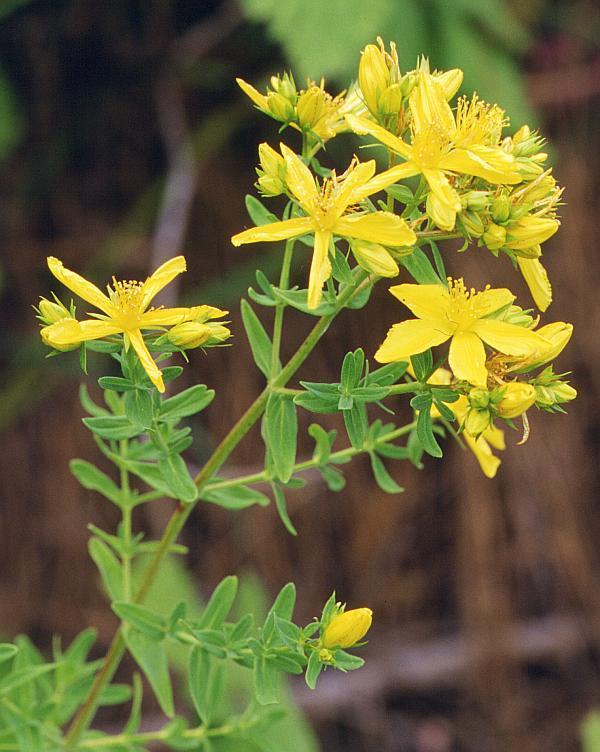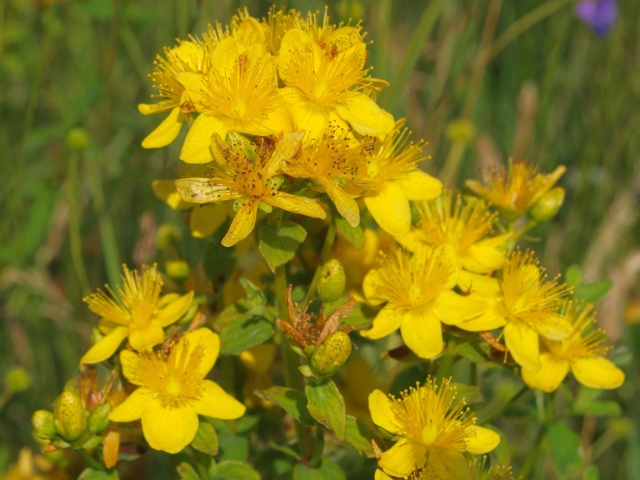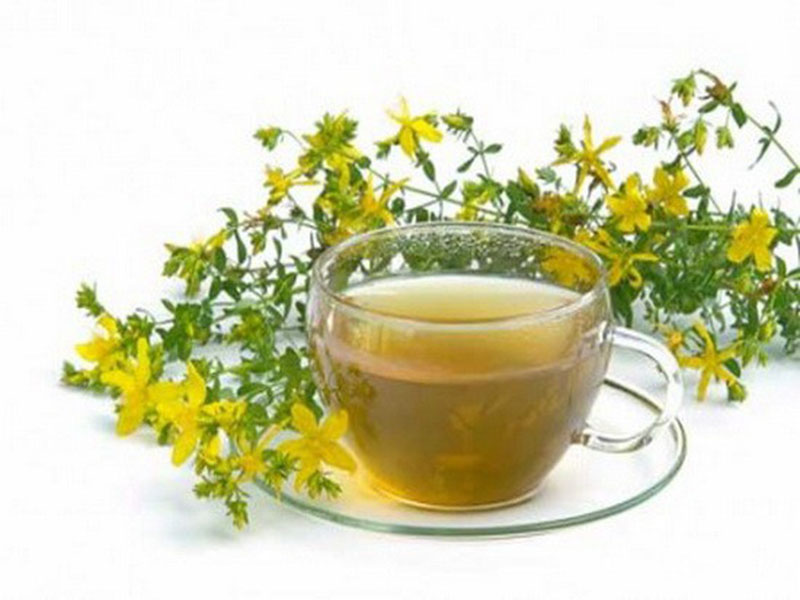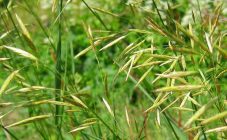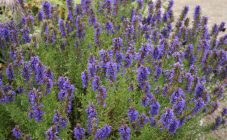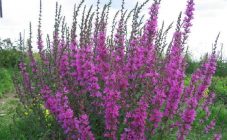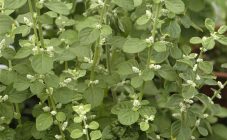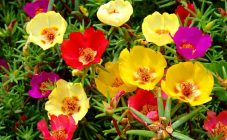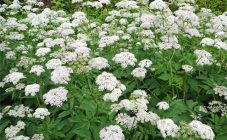Content:
St. John's wort is a medicinal plant belonging to the St. John's wort family. There are approximately 110 species, mainly distributed in the Northern Hemisphere. Most often, St. John's wort occurs in the wild in Europe, the Caucasus, Western Siberia and mainland North America.
The vast majority of varieties of St. John's wort have been widely used in medicine and cosmetology since ancient times. For therapeutic purposes, St. John's wort was used in Rome and Ancient Greece, scientists of those times studied the chemical composition and beneficial properties of the plant in detail.
Today, in many countries of the world, St. John's wort is officially considered a medicinal plant. It is an integral part of a large number of herbal preparations; it is used for the manufacture of medicines, various tinctures and essential oils.
What does the plant St. John's wort look like: description
St. John's wort is a herbaceous plant, the height varies significantly depending on the species. Some representatives are capable of reaching two meters in height. St. John's wort is a herb with a thin stem with small leaves, flowers are formed in yellow color. Representatives of the species bloom mainly in July - August.
The plant has been known to people for a long time, so in colloquial speech there are a large number of other names of St. John's wort, for example, ailment, Ivanovo grass and hare grass.
It is recommended to collect blanks during the flowering of the plant, while only flowers with a small amount of foliage should be cut off. To maintain the maximum concentration of medicinal properties, the herb must be dried in dryers or darkened rooms, which must be well ventilated.
Plant species
All representatives of this species can grow on different soils, even among rocky terrain. St. John's wort, like most wild plants, reproduces by seeds. An interesting fact is that one fruit can simultaneously contain up to 25 thousand seeds, but not all will become new plants.
The herb St. John's wort is divided into the following types:
- Common St. John's wort, popular name - perforated. It is widely used in medicine, as well as in the food industry. It grows everywhere in Europe, most often it can be found in pine forests and fields. The plant can reach a height of 0.8 m, a thin stem with two characteristic grooves, miniature leaves. A large number of "glands" are concentrated on the leaves, which visually creates the impression of the presence of holes. The use of common St. John's wort is contraindicated in people with hypertension.
- Calyx St. John's wort grows as a half-shrub, the stems are dark brown in color. An individual feature is large flowers, their diameter can reach 7 cm. The leaves have blunt tips, reach 3 cm in length, the flesh is fleshy. Distributed in the subtropics, namely in Turkey and the Balkans. You can only meet in open areas with a lot of sunlight.You can also find it in Europe, but here it is grown as an ornamental plant.
- St. John's wort. The height of this representative can reach 1 meter, a characteristic feature is large leaves and miniature flowers grouped into inflorescences. The length of the leaves reaches 10 cm, the width is approximately 6 cm. Each inflorescence has 6-8 flowers. Grows willingly in illuminated areas, often can be found in fields and meadows. It can only be used for decorative purposes.
- A herb similar to St. John's wort is called tetrahedral. The only distinguishing feature is the presence of four sharp edges on a thin stem. The plant is widespread in Europe and East Asia. The plant is not used by humans, this is due to the presence of a large amount of harmful substances in the composition, which contributes to the development of severe complications.
- The drawn-out St. John's wort reaches a height of more than half a meter, the stem is characterized by a cylindrical shape with two ribs. It grows everywhere in the steppe regions, less often it can be found in forest glades. An individual feature is the leaves approximately 4 cm long, which are tightly pressed against the stem.
- The medicinal herb blue St. John's wort reaches a height of 0.7 meters, forms many miniature flowers, which are grouped into inflorescences. Distributed in temperate latitudes, prefers an open and well-lit area. This type of plant is highly valued due to its chemical composition, with its help many diseases are treated, as well as strengthen the immune system.
- The prostrate St. John's wort differs from its congeners in that the stems do not grow up, but spread along the ground. Small flowers and leaves are formed. Unlike other representatives, it is an annual. It grows in the central and northern parts of Europe, due to its excellent cold resistance. Loves light, so it will not grow in partial shade and shade.
Useful properties and contraindications, impact on humans
What does St. John's wort help from? This question interests many adherents of using natural ingredients to strengthen immunity and treat various ailments.
Since ancient times, herbal extracts have been used to treat heart disease, colds, rheumatism, headaches and flu, and infusions are also effective in the treatment of impotence and diseases related to gynecology.
More recently, scientists in laboratory conditions discovered another quality of the plant: it has an antidepressant effect, has a beneficial effect on the functioning of the nervous system. This is a significant advantage for combating depression, the drug has practically no contraindications and at the same time strengthens the body.
Application in traditional medicine
The dried raw material of St. John's wort is indicated for use in the following cases:
- Inflammatory processes in the oral cavity such as stomatitis, pharyngitis, gum disease and tonsillitis.
- Pathologies of the digestive system and biliary tract, for example, diarrhea, dyskinesia, hypoacid stomach, gallbladder hypotension, bloating, hepatitis, cholecystitis.
- Disturbances in the work of the nervous system, it is prescribed for depressive and anxiety states.
Application in traditional medicine
Adherents of folk medicine recipes use St. John's wort in the treatment of:
- alcoholism;
- gastritis;
- sinusitis;
- heartburn;
- mental illness, including depression;
- rapid heartbeat;
- infectious diseases of the skin, burns;
- hepatitis, including viral;
- gallstone diseases, inflammation of the gallbladder.
St. John's wort is most often used in the following dosage forms:
- healing tea;
- broth;
- alcohol tincture;
- water infusion.
Herbal preparations are very popular, which include not only St. John's wort, but also other medicinal plants. As a rule, such drugs are more effective due to the combined effect of beneficial properties.
Contraindications
The plant, despite the large number of positive properties, also has contraindications for use. These features must be taken into account when using raw materials. St. John's wort belongs to low-toxic plants, therefore, it cannot be abused, and also used for a long time.
Abuse can cause high blood pressure and narrowing of the blood vessels. It is contraindicated to use in pregnant women, as well as during lactation.
Diseases and pests
St. John's wort, like other representatives of the flora, can be subject to various diseases and pest attacks. Most often, plants are affected by fungal diseases. Poor resistance to leaf rollers and thrips is noted.
When growing crops in a personal plot for prevention and treatment, it is recommended to use special insecticidal and fungicidal preparations. They can be purchased at any specialty store.
St. John's wort is a medicinal herb that, if consumed irrationally, can do more harm than good. Before use, it is recommended to familiarize yourself with the contraindications and consult with your doctor, drink infusions and decoctions strictly in accordance with the instructions for use.
